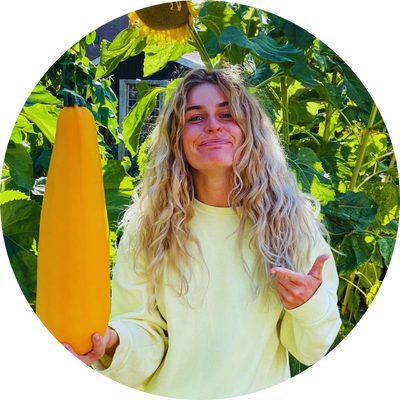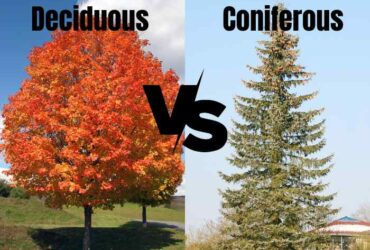The hoya polyneura, also known as ‘fishtail’ hoya, has become popular recently. Besides the beauty of the plant, its flowers are so unique and pretty that you’d never have seen alike.
It can be grown outside, of course, but you can also grow it in a hanging basket that makes it look even more beautiful.
This dramatic fishtail plant does not need much maintenance, making it ideal for home garden growers.
I know you’d have started dreaming about bringing the one for yourself, but a little wait, let’s get through the hoya polyneura care guide to know it better.
If you already have one, don’t worry. Here you’ll find a few things helpful to take care of your plant. So, stick with me and read to the end!
What Is Hoya Polyneura?
Hoya polyneura is a species of flowering plant in the genus Hoya found in the Himalayas to Northwest Yunnan.
It has epiphytic growth habits and is known as the fishtail hoya because the shape of its leaves resembles the tail fins of the fish.
It grows attached to the trellis and in the hanging pots or baskets. This evergreen climber has stiff branches that grow longer before getting down.
Hoya polyneura flower is a waxy star-shaped creamy yellow and red color that looks as if it is made up of wax.
Did you know? Hoya polyneura flowers have a delightful scent.
It grows in a suspended epiphytic manner and wraps its roots around the trees and rocks in the area. It is found mainly in the Southeast areas at altitudes of approximately 500 to 1000 meters.
It grows up to 1.5 meters long even if it grows slower, but it best grows in a tropical climate.
Now, let’s move to the hoya polyneura care guide to get the most out of your plant.
Hoya Polyneura Care
Like other flowering plants, light, temperature and humidity, watering, fertilizer, pot, and potting mix, play a significant role in the healthy growth of polyneura hoya.
Let’s get a deep insight into all the factors one by one.
Light
Like hoyas, these polyneura hoyas also need sunlight but not direct mid-day sunlight. If you are planning or have placed it somewhere where direct light hits, you should consider placing a curtain to lessen the intensity of light.
Its leaves require diffused sunlight to grow and get bigger. On average, 6 hours of sunlight daily would be enough for the plant.
Although it can be grown in shadowy hanging baskets, it won’t get enough sunlight. So, try exposing it to partial direct light for better and healthy growth.
Fact Check! If hoya polyneura is grown where no direct light comes in, the chances of etiolation will increase.
Water
For hoya polyneura care, watering depends on when the soil dries out. So, it can vary from once to thrice a week. But during winter, you may lessen the frequency to once every 15 days.
You can judge the potting mix by picking up the pot and judging its weight. Or you can also check it by inserting the finger into the potting mix and check if the soil has dried out.
Also, do not just sprinkle water. Water it completely (more than average). But make water float on the soil or when the soil is already damped. If you water the damped soil, root rot may happen.
Temperature and humidity
As it best grows in moderate climates, the ideal temperature for its growth ranges from 10 to 25 degrees centigrade (50 to 77 degrees Fahrenheit).
Its leaves are sensitive and can’t bear higher temperatures. Also, the flowers don’t grow when the temperatures are too high.
Hoya polyneura thrives when the humidity is 60% or more. If the days are dry, the plant may require attention. So, you may increase humidity with a humidifier or pebble water tray.
Tip: You may spray the plant to avoid moisture loss.
Fertilizer
Hoyas grow well only in the presence of fertilizer. They don’t show growth in the absence of fertilizer. Keep up with providing them with fertilizer regularly.
You can stop applying fertilizer during winter so they can rest.
Remember: The fertilizer should be well-balanced and as organic as possible.
Pot
Many people think that all the plants grown in the soil do better than the ones grown in pots or baskets. But that’s not the truth. Hoya polyneura likes to be grown in pots. They don’t like to absorb excess moisture from the soil.
Pots come in different materials, from plastic to ceramics. You can choose ceramic pots if you don’t want to water them frequently.
The only important thing while choosing the pot is that it should contain a hole for proper water drainage.
Potting mix
Many types of soil and potting mix are available in the market but try to choose the one made specifically for hoya polyneura.
The specific hoya mix comprises cactus soil, perlite, and orchid bark. You can prepare your own by mixing one part of worm castings with two parts of horticulture charcoal, perlite, and orchid bark.
Remember: The potting mix should be well draining.
Repotting and pruning
Repotting the hoya may affect its growth, and you may see leaves drooping. So, try not to repot it repeatedly if it is doing all right.
You can prune the old dead leaves to make them look greener and healthier. They usually vertically grow with a trellis or spread in hanging baskets.
Let’s examine a few more exciting and valuable things about the hoya polyneura.
Propagating The Hoya Polyneura
Hoya polyneura is one of the simplest flowering plants to grow. You can propagate it by stem cutting quickly. Let’s look at the process in a bit more detail.
First, cut 5 to 8 inches cuttings from the tip of the stems. Now, remove the leaves from the lower ends only.
Now it’s time to plant the cuttings. Place the cuttings 3 inches deep into the soil (well-draining).
- Place the pot or basket where the cuttings get diffused sunlight.
- Water the cuttings when the soil starts drying out completely.
- Under normal conditions, roots start developing in a month. After that, shoots will start appearing.
5 Amazing Facts About Hoyas
1. Hoyas were named after the death of the friend of the botanist (who discovered hoyas).
2. They are commonly known as wax plants and porcelain flowers.
3. They are fishtail hoyas because their leaves resemble fish fins.
4. Hoya blooms drip sweet nectar to attract pollinators.
5. Hoyas grow in some of the hottest parts of the world. The secret to survival is very high humidity (more than 60%); when it is cool, only apply enough water to prevent leaf wrinkling.
Wrap Up!
This article covers what hoya polyneura is. Hoya polyneura is a species of flowering plant in the genus Hoya found in the Himalayas to Northwest Yunnan.
It also covers the hoya polyneura care guide that covers how light, temperature and humidity, watering, fertilizer, pot, and potting mix, play a significant role in the healthy growth of polyneura hoya.
Then comes the method to propagate the hoya polyneura. The process is explained in detail. It also covers the 5 amazing facts about the hoyas.
Have you got more questions related to ‘hoya polyneura care’? Here’re the answers to the most frequently asked questions.
FREQUENTLY ASKED QUESTIONS
Does hoya polyneura like humidity?
It likes humidity and grows healthy in 60% or more humidity.
How does the hoya polyneura flower smells?
Their flowers have a delightful scent (varies depending upon the variety).
Why does my hoya polyneura have yellow leaves?
One of the reasons for turning hoya’s leaves yellow is the excess watering. Do not water your
plant until the soil dries out completely.
Does hoya polyneura, also known as hoya polyneura broget?
Hoya polyneura broget is rare to find a beautiful, variegated plant with scented flowers.
Do hoyas like sun or shade?
They don’t need bright direct sunlight; it’s better to place them in indirect sunlight














Leave a Reply